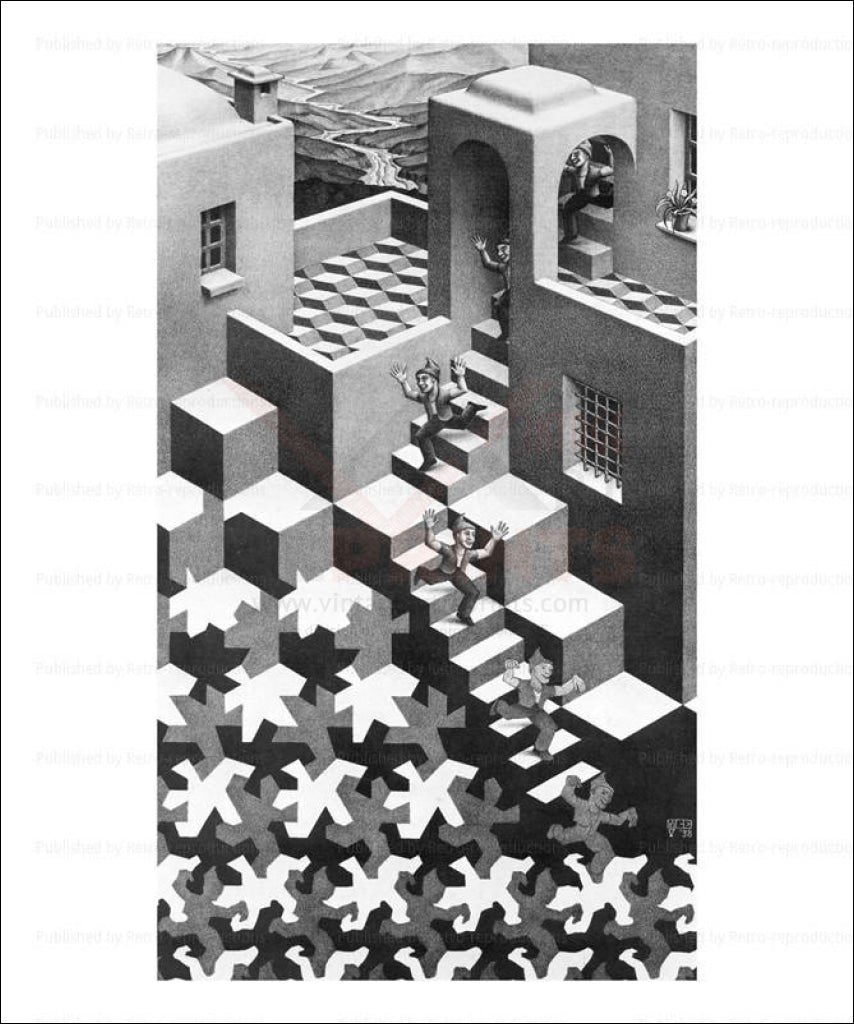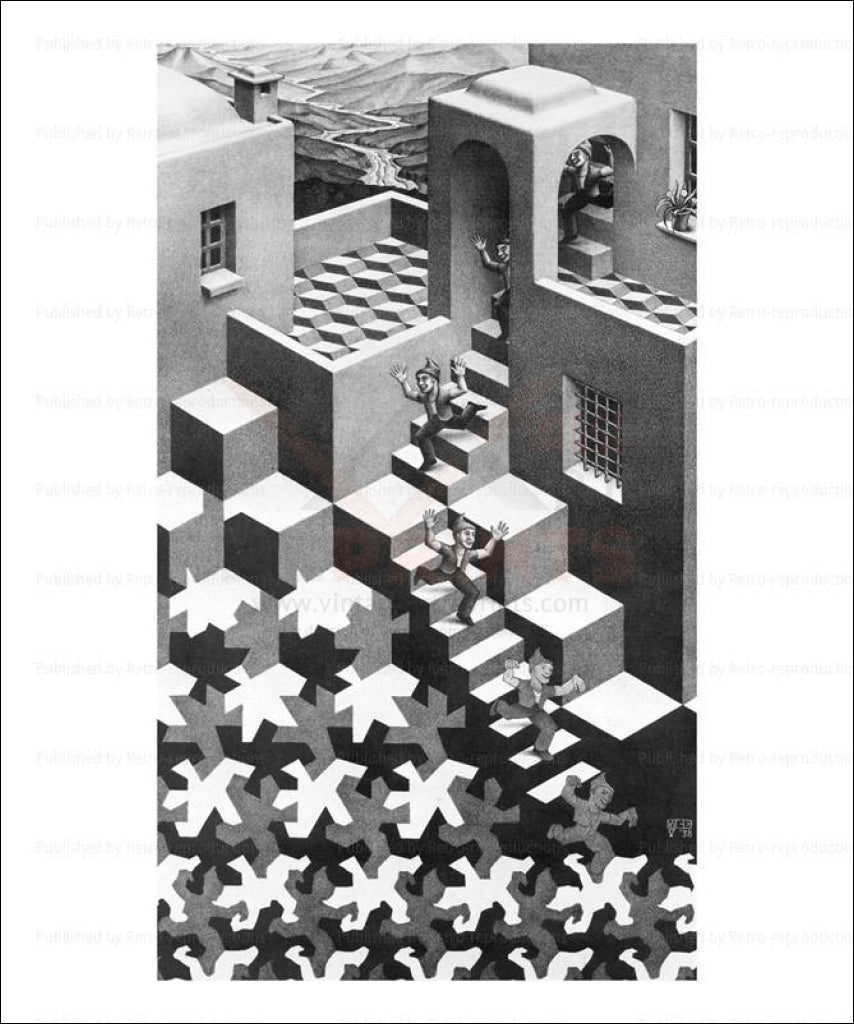1
/
of
1
Cycle 1938, M.C. Escher
Cycle 1938, M.C. Escher
Regular price
$39.00 USD
Regular price
Sale price
$39.00 USD
Unit price
/
per
Shipping calculated at checkout.
Couldn't load pickup availability
Share
Maurits Cornelis Escher (Dutch pronunciation: (About this sound listen); 17 June 1898 – 27 March 1972), or commonly M. C. Escher, was a Dutch graphic artist who made mathematically inspired woodcuts, lithographs, and mezzotints.
His work features mathematical objects and operations including impossible objects, explorations of infinity, reflection, symmetry, perspective, truncated and stellated polyhedra, hyperbolic geometry, and tessellations. Although Escher believed he had no mathematical ability, he interacted with the mathematicians George Pólya, Roger Penrose, Harold Coxeter and crystallographer Friedrich Haag, and conducted his own research into tessellation.
Early in his career, he drew inspiration from nature, making studies of insects, landscapes, and plants such as lichens, all of which he used as details in his artworks. He traveled in Italy and Spain, sketching buildings, townscapes, architecture and the tilings of the Alhambra and the Mezquita of Cordoba, and became steadily more interested in their mathematical structure.
Escher's art became well known among scientists and mathematicians, and in popular culture, especially after it was featured by Martin Gardner in his April 1966 Mathematical Games column in Scientific American. Apart from being used in a variety of technical papers, his work has appeared on the covers of many books and albums. He was one of the major inspirations of Douglas Hofstadter's 1979 book Gödel, Escher, Bach.
View full details
His work features mathematical objects and operations including impossible objects, explorations of infinity, reflection, symmetry, perspective, truncated and stellated polyhedra, hyperbolic geometry, and tessellations. Although Escher believed he had no mathematical ability, he interacted with the mathematicians George Pólya, Roger Penrose, Harold Coxeter and crystallographer Friedrich Haag, and conducted his own research into tessellation.
Early in his career, he drew inspiration from nature, making studies of insects, landscapes, and plants such as lichens, all of which he used as details in his artworks. He traveled in Italy and Spain, sketching buildings, townscapes, architecture and the tilings of the Alhambra and the Mezquita of Cordoba, and became steadily more interested in their mathematical structure.
Escher's art became well known among scientists and mathematicians, and in popular culture, especially after it was featured by Martin Gardner in his April 1966 Mathematical Games column in Scientific American. Apart from being used in a variety of technical papers, his work has appeared on the covers of many books and albums. He was one of the major inspirations of Douglas Hofstadter's 1979 book Gödel, Escher, Bach.

-
High Quality Reprints
Every piece of art is printed using premium materials. We carefully package and deliver your order to your door.
-
Wholesale Orders
We welcome wholesale inquiries on some of our products. Click here to learn more about our offering.
Sign Up for Our Newsletter
Get a sneak peek on upcoming promos and get 10% off your first order.

